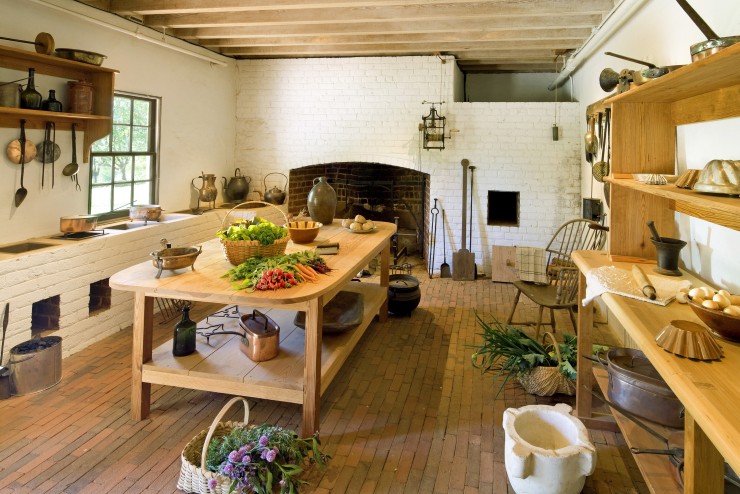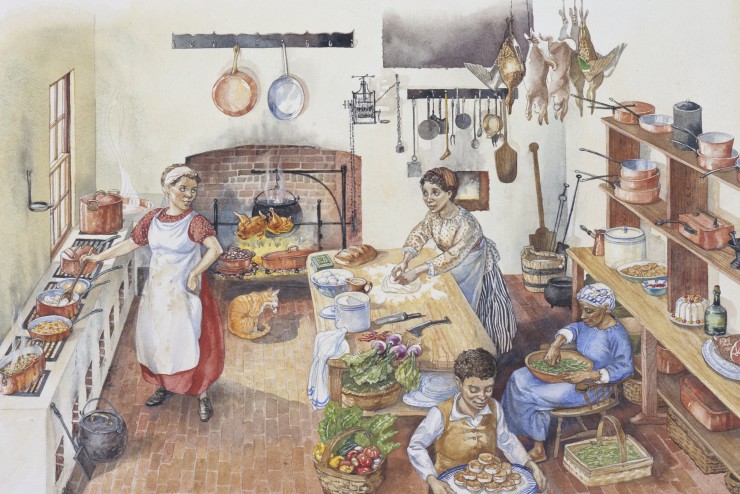This kitchen, completed by 1809, was among the best equipped in Virginia. While serving as U.S. Minister to France, Jefferson purchased a large number of cooking utensils for his residence in Paris. In the early 1790s, as part of an 86-crate shipment of goods, he had them shipped back to America and eventually to Monticello. While the cellar of the South Pavilion housed Monticello's first, relatively small kitchen, a second kitchen was constructed during the expansion of the house. Completed by 1809, the newer, much larger work space featured a bake oven, a fireplace, and an eight-opening stew stove with integrated set kettle. A tall case clock also stood in the kitchen: Isaac Granger Jefferson, an enslaved smith at Monticello, later recalled that the only time Jefferson went into the kitchen was to wind the clock.


The stew stoves built into the 1809 Kitchen at Monticello

Watercolor by Gail McIntosh depicting the activity of Monticello's 1809 Kitchen
Enslaved chefs Edith Fossett and Francis Hern first trained with French chefs Étienne Lemaire and Honoré Julien at the White House, learning the style and cuisine of Paris. Upon Jefferson's retirement, Fossett and Hern cooked in the newly built 1809 Kitchen and prepared iconic meals that one visitor remarked where in a "half French, half Virginian" style.
The kitchen's brick floor, bake oven, fireplace, stew stove, and the tall case clock seen at Monticello today are part of a restoration and re-interpretation effort that culminated in the summer of 2004 with the opening of the space to visitors.
- 2018, based on the Spring 2005 Monticello Newsletter article, "Refurbished Kitchen is Opened to Visitors"
ADDRESS:
1050 Monticello Loop
Charlottesville, VA 22902
GENERAL INFORMATION:
(434) 984-9800
